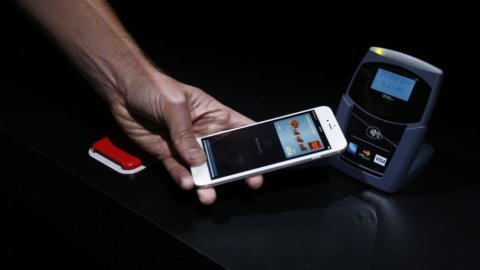Mobile banking in Italy and Europe
According to the ING International Survey 2015, conducted in January-February 2015 on over 14.000 owners of mobile devices (smartphones and tablets) from 15 countries around the world (including Italy), the Netherlands is the largest market for mobile banking (58% of users of mobile devices), followed by the USA (50%) and the UK (49%). In terms of geographical area, Europe lags behind the USA and Australia, although we have more people intending to adopt mobile banking in the next 12 months. In Italy, only 36% of smartphone or tablet owners use mobile banking and another 20% think they will use it in the next 12 months.
Advantages and disadvantages of mobile banking
According to a study by the researcher Chandran, the use of mobile banking increases the risk of phishing, i.e. false messages from one's bank with the aim of stealing personal data. You also run the risk of having your mobile banking PIN and other sensitive data on your mobile devices stolen. To avoid these risks, it is necessary to follow the same precautions that are used for the PC: change the password on your smartphone, protect confidential information, regularly delete cookies and caches.
Mobile banking also offers interesting opportunities: 90% of Italian users of mobile banking since 2014 (mobile bankers) interviewed by ING claim to be able to better control and manage money thanks to mobile banking.
A recent study by the FCA (the British Consob) goes into detail on how these tools improve money management. The research analyzes a sample of customers of two banks, which offer annual current account statements, mobile banking services via an app, SMS alerts regarding their account and commissions paid. The research finds that unexpected overdraft fees – which are often the result of customer errors and badly timed transactions – are statistically significantly reduced by an average of 8% for users of banking apps and by 6 % for those who use SMS alerts. Those who use both services enjoy an even greater cost reduction of 24%. This shows that alerts work if the customer is able to react quickly to certain information: this is easier to do if you have a mobile app than an online account.
Conversely, the annual reports do not change customer behavior in any way. Furthermore, the use of mobile banking and alerts reduces the amount of liquidity left in current accounts by £11 and £248 in 428 months, which yield little or no interest.
But if you think that mobile banking and alerts are only beneficial for customers, you are wrong. As is logical to expect, on the one hand mobile apps cannibalize online banking in part, decreasing its use by 30%. However, alerts increase it by 4%, and above all, using them together with apps is negatively correlated with switching banks and positively with switching accounts and inactivity (low use of the current account). This means that these services increase a customer's loyalty to a bank, both because of the costs of switching and because they help them manage their personal finances.
But since "there's an app for everything", as there are applications for controlling one's money, there are also those for spending it: I'm talking about mobile payments.
Mobile payment in Italy and Europe
Even in Italy, home of cash, 60% of those interviewed by the ING International Survey 2015 admit that they use less cash than a year ago. This does not mean that Italians will embrace digital currencies en masse, such as bitcoin: only 43% think they are the future of online shopping and even fewer (23%) have used them at least once in their life. However, apps for paying via mobile are more successful: in Italy we are in third place after Turkey and Poland for their use (43% of respondents). Added to this is a further 20% who trust they will use them in the next 12 months.
Lights and shadows of mobile payments
Two great advantages of mobile payment apps are the immediacy of use, so much so that 50% of European customers appreciate them for their speed and 42% for their ease of use (source: ING International Survey 2015) . Mobile payment apps currently suffer from a major problem: distrust. 42% of Europeans have never used them because they don't trust the institutions that offer them. When asked which institution they find more reliable for mobile payments, 84% cited banks. A sign that despite everything, banks are still identified as the main money intermediaries. At the moment.





